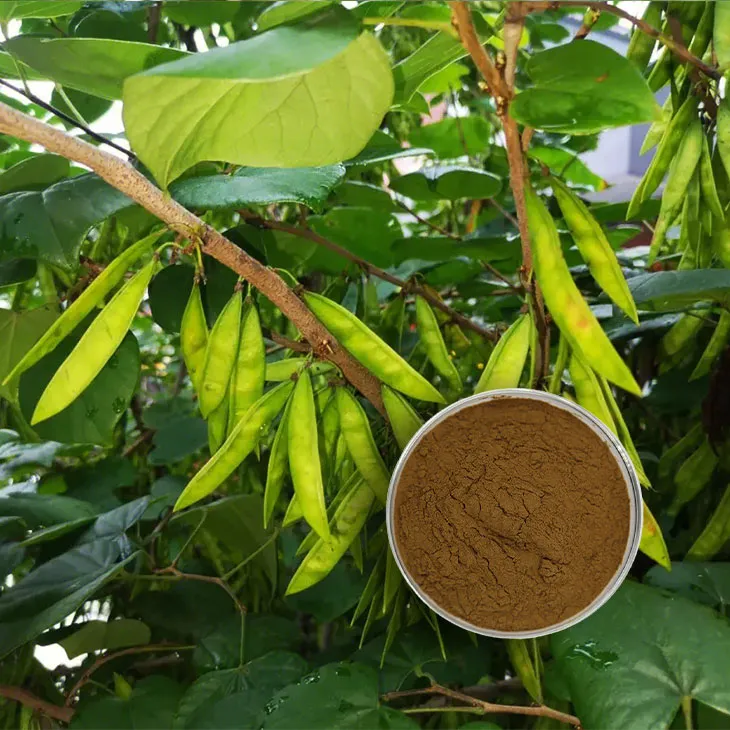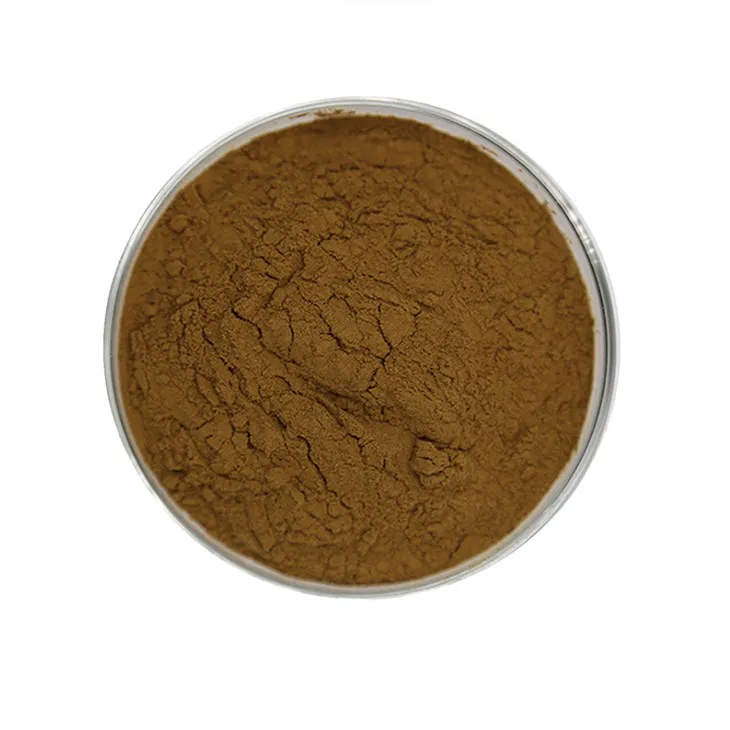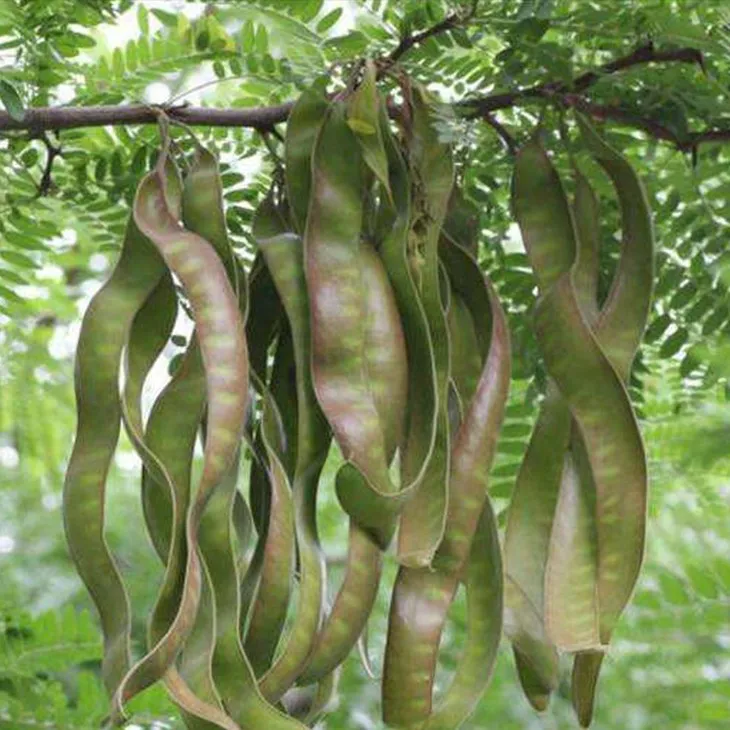- 0086-571-85302990
- sales@greenskybio.com
Saponin extract manufacturers from China.
2024-11-29

Introduction
China has become a prominent force in the international Saponin Extract manufacturing industry. Saponin Extracts are compounds that have attracted significant attention due to their multifaceted biological activities and wide - ranging potential applications across different sectors. These extracts are produced by a large number of Chinese manufacturers who uphold high - quality benchmarks.

Source of Raw Materials
Chinese Saponin Extract manufacturers have a diverse range of sources for their raw materials. They primarily focus on plants that are rich in saponins.
Ginseng
Ginseng is a well - known plant in traditional Chinese medicine. It contains a significant amount of saponins. Manufacturers in China often use ginseng as a raw material for saponin extraction. The unique saponin composition in ginseng gives the resulting extract various properties that are valuable in different applications.
Soapwort
Soapwort is another plant that is rich in saponins. It has been used for centuries in different cultures for its cleansing properties, which are due to the presence of saponins. Chinese manufacturers utilize soapwort to produce saponin extracts. These extracts can be further processed for use in industries such as cosmetics and personal care products.
Fenugreek
Fenugreek is also a valuable source of saponins. In China, fenugreek - based saponin extracts are being produced. These extracts have potential applications in the food and pharmaceutical industries. For example, they can be used as additives in food products or as ingredients in medications due to their bioactive properties.

Extraction Techniques
To ensure the production of high - quality saponin extracts, Chinese manufacturers employ a variety of advanced extraction techniques.
Solvent Extraction
Solvent extraction is one of the commonly used methods. In this process, solvents are used to dissolve the saponins from the plant material. Different solvents can be selected based on the nature of the plant and the specific saponins to be extracted. For example, ethanol is often a preferred solvent due to its relatively low toxicity and high solubility for many saponins. The process involves soaking the plant material in the solvent, followed by filtration and evaporation to obtain the saponin extract. This method is relatively cost - effective and can be scaled up for large - scale production.
Supercritical Fluid Extraction
Supercritical fluid extraction is a more advanced technique. Carbon dioxide is often used as the supercritical fluid. Under specific temperature and pressure conditions, carbon dioxide reaches a supercritical state where it has properties of both a gas and a liquid. This supercritical carbon dioxide can penetrate the plant material effectively and selectively extract the saponins. The advantage of this method is that it is a green extraction method as carbon dioxide is non - toxic and can be easily removed from the extract, leaving behind a pure saponin extract with no solvent residues. It also allows for better control of the extraction process, resulting in a more consistent product quality.
Enzymatic Extraction
Enzymatic extraction is another innovative approach. Enzymes are used to break down the cell walls of the plant material, making it easier to extract the saponins. This method can be more specific and can potentially increase the yield of saponin extraction. For example, cellulase enzymes can be used to break down the cellulose in the plant cell walls, allowing for better access to the saponins. The enzymatic extraction process is often carried out under mild conditions, which helps to preserve the bioactivity of the saponins.

Quality Control Measures
Chinese saponin extract manufacturers place great emphasis on quality control.
Compliance with Regulations
They comply with both domestic and international regulations. Domestically, they follow the strict quality standards set by Chinese regulatory authorities. Internationally, they adhere to the requirements of importing countries. For example, in the European Union, products need to meet specific safety and quality criteria. Chinese manufacturers ensure that their saponin extracts meet these standards, which makes their products suitable for export to a wide range of global markets.
Testing and Analysis
Manufacturers conduct extensive testing and analysis of their saponin extracts. They use various analytical techniques such as high - performance liquid chromatography (HPLC) to determine the purity and composition of the extracts. This helps to ensure that the extracts contain the desired amount of saponins and are free from contaminants. Quality control laboratories within the manufacturing facilities are equipped with state - of - the - art instruments to carry out these tests accurately.

Research and Development
Continuous research and development (R & D) efforts are a key aspect of the Chinese saponin extract manufacturing industry.
New Applications in Pharmaceuticals
Researchers are exploring the potential use of saponin extracts in the pharmaceutical field. Saponins have shown antioxidant, anti - inflammatory, and anticancer properties in pre - clinical studies. Chinese R & D teams are working on developing new drugs or drug formulations based on saponin extracts. For example, they are investigating how saponin extracts can be used to treat chronic diseases such as diabetes and cardiovascular diseases. By understanding the molecular mechanisms of saponin action, they hope to develop more effective therapeutic agents.
Applications in Cosmetics
In the cosmetics industry, saponin extracts are being studied for their potential use in skin care products. Saponins have properties that can help with skin hydration, anti - aging, and skin barrier function improvement. Chinese manufacturers are collaborating with research institutions to develop new cosmetic products containing saponin extracts. These products could potentially offer new solutions for consumers with different skin concerns.
Use in Food Additives
Saponin extracts also have potential applications as food additives. They can be used as natural emulsifiers, foaming agents, or stabilizers in food products. Chinese R & D efforts are focused on exploring the safety and functionality of saponin extracts in food applications. By developing new food additives based on saponin extracts, manufacturers can offer more natural and healthy alternatives to traditional additives.
Conclusion
China's saponin extract manufacturers are making significant contributions to the global market. With their diverse sources of raw materials, advanced extraction techniques, strict quality control measures, and continuous research and development efforts, they are well - positioned to meet the growing demand for saponin extracts in various industries. As the understanding of saponin properties and applications continues to expand, Chinese manufacturers are likely to play an even more important role in the future development of the saponin extract industry.
FAQ:
What are the main plants used as raw materials by Chinese saponin extract manufacturers?
Chinese saponin extract manufacturers often source raw materials from a wide range of plants rich in saponins, such as ginseng, soapwort, and fenugreek.
What extraction techniques do Chinese saponin extract manufacturers use?
They employ advanced extraction techniques, including but not limited to solvent extraction, supercritical fluid extraction, and enzymatic extraction.
Do Chinese saponin extract manufacturers follow quality control measures?
Yes, they adhere to strict quality control measures and comply with both domestic and international regulations, making their products reliable for export to different parts of the world.
What are the potential applications of saponin extracts produced by Chinese manufacturers?
Continuous research and development efforts are being made to explore new applications of saponin extracts in the fields of pharmaceuticals, cosmetics, and food additives.
Why is China a significant player in the global saponin extract manufacturing market?
China has numerous manufacturers that produce saponin extracts with high - quality standards. They use various advanced extraction techniques, follow strict quality control, and explore diverse applications, which makes China a significant player in the global market.
Related literature
- Saponin Extracts: Production and Applications in China"
- "Quality Control in Chinese Saponin Extract Manufacturing"
- "Advanced Extraction Techniques for Saponin Extracts in China"
- ▶ Hesperidin
- ▶ citrus bioflavonoids
- ▶ plant extract
- ▶ lycopene
- ▶ Diosmin
- ▶ Grape seed extract
- ▶ Sea buckthorn Juice Powder
- ▶ Beetroot powder
- ▶ Hops Extract
- ▶ Artichoke Extract
- ▶ Reishi mushroom extract
- ▶ Astaxanthin
- ▶ Green Tea Extract
- ▶ Curcumin Extract
- ▶ Horse Chestnut Extract
- ▶ Other Problems
- ▶ Boswellia Serrata Extract
- ▶ Resveratrol Extract
- ▶ Marigold Extract
- ▶ Grape Leaf Extract
- ▶ blog3
- ▶ blog4
-
Bulk purchase of black pepper extract.
2024-11-29
-
Ginger extract of the best quality.
2024-11-29
-
Wholesale Passion Fruit Extract Suppliers.
2024-11-29
-
Organic Genistein, Australia.
2024-11-29
-
Quercetin
2024-11-29
-
Panax Ginseng Leaf Extract
2024-11-29
-
Clove Powder
2024-11-29
-
Saponin Extract
2024-11-29
-
Boswellia Serrata Extract
2024-11-29
-
Lily extract
2024-11-29
-
Kidney Bean Extract
2024-11-29
-
Peppermint Oil
2024-11-29
-
Jujube Extract
2024-11-29
-
Black Garlic Extract
2024-11-29




















